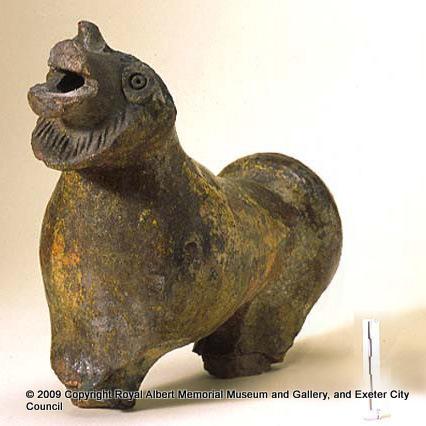Medieval roof finial
Back to Time Period
This quaint earthenware animal was found when foundations were dug for the tower of the Roman Catholic church in South Street in 1883. The body of the creature was thrown on a potter's wheel, the legs and head being added separately before glazing and firing. The fabric indicates that it was made in one of the potteries which used the sands of streams running off Dartmoor, perhaps that at Bridgetown near Totnes. When this vessel was first discovered it was thought to be an aquamanile - a vessel used at table to wash hands after a meal. In fact it is a finial - the ornamental end to the tiles on the ridge of a roof. Prior to its loss in World War II, one such finial was still visible in Exeter- the early 17th century example on the old Chevalier House in Fore Street. There was once others: for example in 1394-5 a crest tile carrying the figure of St Paul was bought for a house in High Street.
Acknowledgments: RAM Museum



















